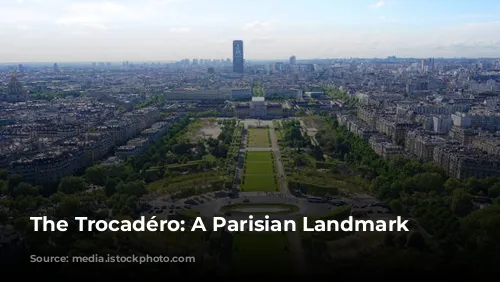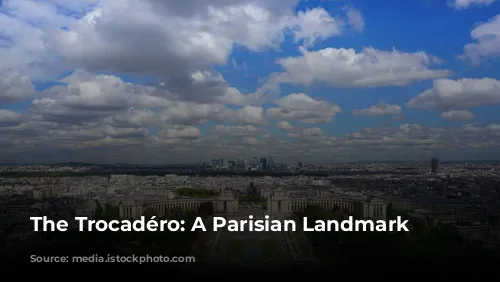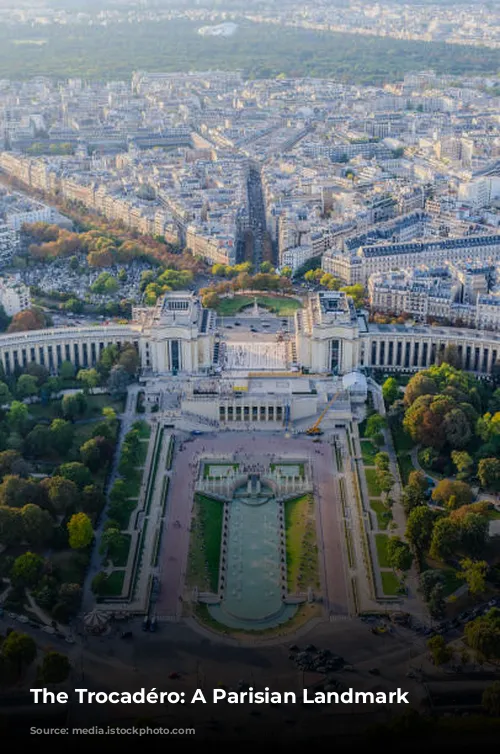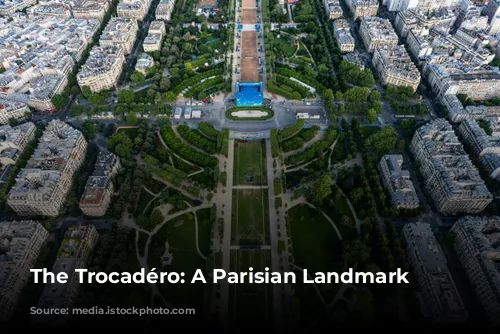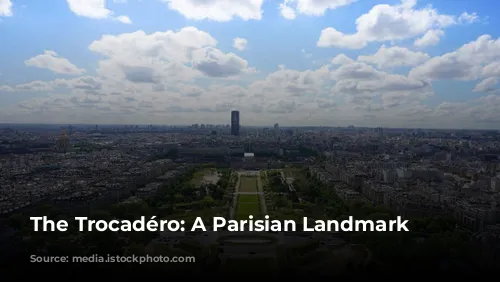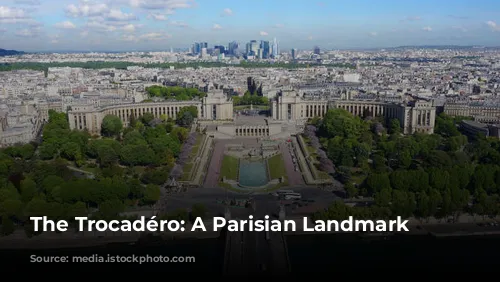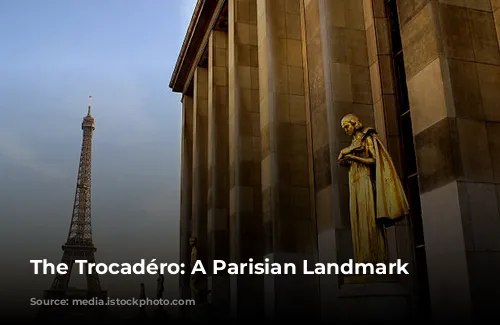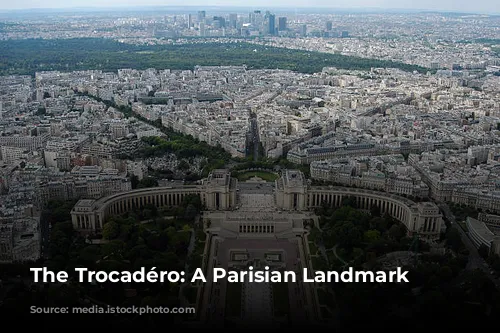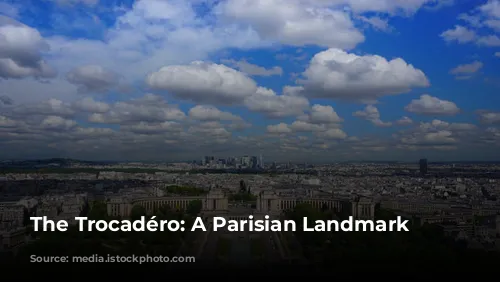Nestled in the 16th arrondissement of Paris, the Trocadéro is more than just a hill. It’s a Parisian icon, a vibrant hub where history, art, and breathtaking views converge. At its peak, the Trocadéro Esplanade, a vast square, separates the majestic wings of the Palais de Chaillot. This impressive building stands tall, replacing the former Palais du Trocadéro. The verdant Trocadéro Gardens cascade down the hillside, adding a touch of natural beauty to this captivating location.
Reaching the summit of the Trocadéro is a delightful journey. You can ascend from Place du Trocadéro, Place du 11 novembre, or through the charming Trocadéro Gardens. Wherever you choose, the anticipation builds as you approach the iconic panorama.
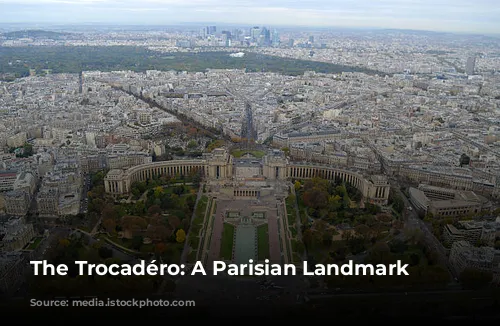
A View to Remember: The Eiffel Tower from the Trocadéro
The Trocadéro Esplanade is a beloved gathering place for tourists and Parisians alike, offering an unparalleled view of the Eiffel Tower. Across the Seine River, after the elegant Pont d’Iéna, the Iron Lady stands tall, a majestic monument against the Parisian skyline. Descending the hill through the Trocadéro Gardens, you’ll be captivated by the beauty of your surroundings, a symphony of lush greenery, cascading waterfalls, and artistic sculptures. The journey itself is a feast for the senses.
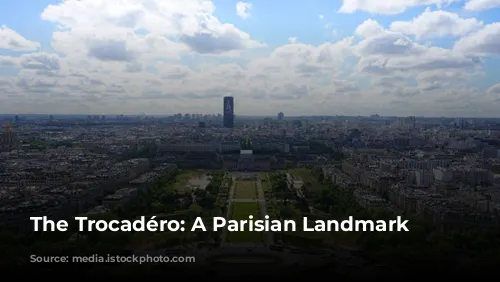
The History of the Trocadéro Esplanade: From Universal Exhibition to Human Rights
The Trocadéro Esplanade was born in the 1930s, coinciding with the construction of the Palais de Chaillot. It was designed for the 1937 Universal Exhibition, a grand celebration of innovation and progress. Its name is a nod to the Battle of Trocadero, a significant victory for the French army over the Spanish forces in 1828 under the command of Napoleon I. The name symbolizes French military prowess and the triumph of the French spirit. This connection to history adds a layer of depth and intrigue to the Trocadéro Esplanade.
In 1985, the esplanade underwent a symbolic renaming, becoming the “Parvis des Droits de l’Homme” (Human Rights Square). This change commemorates the 1948 adoption of the Universal Declaration of Human Rights by the United Nations General Assembly, which took place on this very spot. The Trocadéro Esplanade became a symbol of human rights, standing as a reminder of the universal values of equality, freedom, and justice.
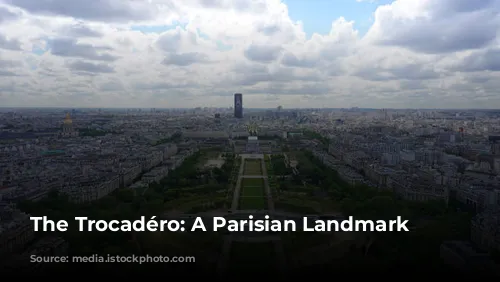
The Evolution of the Trocadéro Gardens: From Moorish Palace to Parisian Oasis
The Trocadéro Gardens, before becoming the verdant haven they are today, were the subject of many grand but unfulfilled dreams. From Louis XVIII’s vision of a Villa Trocadéro to Napoleon’s desire for an imperial city honoring the King of Rome, and even sculptor Antoine Etex’s monumental fountain featuring a lighthouse, these ambitious projects never came to fruition. Ultimately, architects Jules Bourdais and Gabriel Davioud created a neo-Moorish palace, a surprising and captivating architectural style.
To highlight this new palace, the Trocadéro Gardens were designed for the 1878 Universal Exhibition. Urban planner Alphand broke from the traditional French garden design, opting for a grand waterfall cascading down the Chaillot hill. This vision transformed the gardens into a landscape of winding paths, adorned with statues and fountains, and an unconventional aquarium at the foot of the hill.
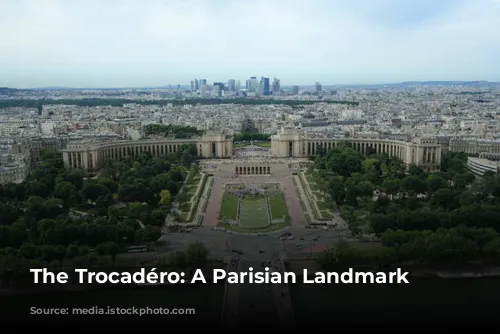
The Trocadéro Today: A Symphony of Art, Nature, and Light
While time has brought changes, the Trocadéro Gardens remain a serene oasis in the heart of Paris. Although some of the original fountains and statues have been moved, the garden’s essence endures. The bronze sculptures, allegories of the 6 continents, now stand proudly in front of the Musée d’Orsay, while others are scattered throughout France, carrying a piece of the Trocadéro’s history. The “Troca,” as it’s affectionately known to trendy Parisians, is a delightful place to stroll, to find peace amidst the bustling city.
The Trocadéro Fountain, also known as the Warsaw Fountain, is the heart of the gardens. Its large basin and 20 water cannons create a mesmerizing display, enhanced by the cascading waterfalls that feed it. As evening descends, the Trocadéro district and the 16th arrondissement come alive with lights, and the Trocadéro Fountain’s light show begins. This spectacle illuminates the bronze statues with animal heads, creating a mesmerizing dance of light and shadow.
As you wander along the garden paths, you’ll encounter sculptures dating back to the Belle Époque, nestled among lush vegetation. Passing the children’s playground, you’ll reach the Paris Aquarium, a fascinating glimpse into the underwater world. The Trocadéro Gardens, a place of history, art, and natural beauty, offer a unique and enchanting experience for every visitor.

Discover the Trocadéro with Bleu de Grenelle
For a truly unforgettable Parisian experience, consider staying at the Bleu de Grenelle boutique hotel. This charming hotel is ideally located in the heart of Paris, just a short walk from the Trocadéro, the École Militaire, the Champ-de-Mars park, the Eiffel Tower, and the Pont d’Iéna. You can easily explore these Parisian gems, immersing yourself in the city’s rich history and culture.
The Bleu de Grenelle offers a variety of rooms, from classic to suites, catering to every need and preference. You can even opt for a room with a breathtaking view of the Eiffel Tower. The hotel’s commitment to comfort is evident in its amenities, ensuring an unforgettable stay. Imagine enjoying a bottle of champagne, savoring the night’s magic as the Eiffel Tower sparkles, all from the comfort of your room.
To enhance your stay, the hotel provides a range of services including breakfast, a cozy bar, and a delightful tea time. With the Trocadéro, its gardens, and its iconic views, just a short stroll away, the Bleu de Grenelle offers the perfect starting point for a memorable Parisian adventure.
